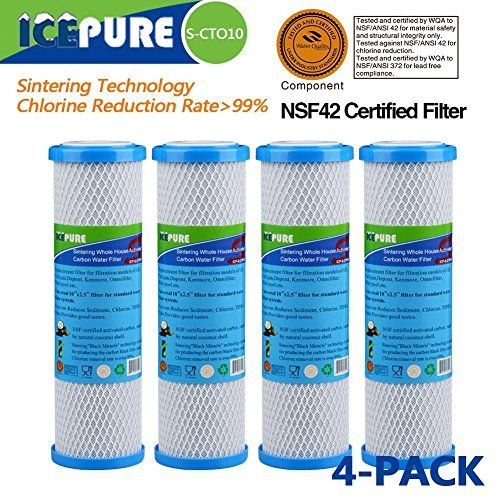Activated Carbon Water Treatment

Granular activated carbon is an effective filter for removing organic chemicals that may be in drinking water.
Activated carbon water treatment. Activated carbon adsorption is regarded as one of the best and most common treatment methods for removing impurities from drinking water both at municipal treatment works and in home filter systems. Activated carbon can be prepared from many common substances that are high in carbon and bituminous coal is a typical starting point. There are specific types of activated carbon filtration methods and equipment that are indicated depending upon the contaminants involved. This big internal surface makes active carbon ideal for.
Activated carbon is produced specifically so as to achieve a very big internal surface between 500 1500 m 2 g. Activated carbon is used by water treatment facilities to help improve water quality. In this process active carbon is the solid. Calgon carbon has been providing water remediation and treating perfluorinated compounds pfoa pfc pfos for 15 years.
Activated carbon is also used for the measurement of radon concentration in air. Many other small devices use carbon that has been pressed into a solid block. The carbon may be either powdered or granular the former being added as a slurry into the water before chlorination and the latter used in. Activated carbon is used in the treatment of municipal waste water either as a secondary or a tertiary process with the advantage over other materials of being able to control odor in the water.
It solves many water contamination issues that many of us have to deal with every day but there are a few exceptions that you must consider. Granular activated carbon treatment is most common for private water systems. Many home water treatment devices also employ activated carbon especially to help reduce water odor and taste. Adsorption is a process where a solid is used for removing a soluble substance from the water.
Activated carbon filtration is an excellent water treatment method and technology. Most activated carbons are made from raw materials such as nutshells wood coal and petroleum. The final beds of activated carbon in the sequential series complete the polishing to remove trace. Activated carbon is a favored water treatment technique because of its multifunctional nature and the fact that it adds nothing detrimental to the treated water.
The working goal is high quality potable water at the lowest cost. Granular activated carbon can be used in a filter bed or media through which water passes or powdered activated carbon. This lead and lag bed configuration enables treatment of a maximum number of gallons of water per pound of activated carbon before spent carbon must be replaced with fresh. Activated carbon filtration is an effective water treatment method due to its multi functional nature.














































